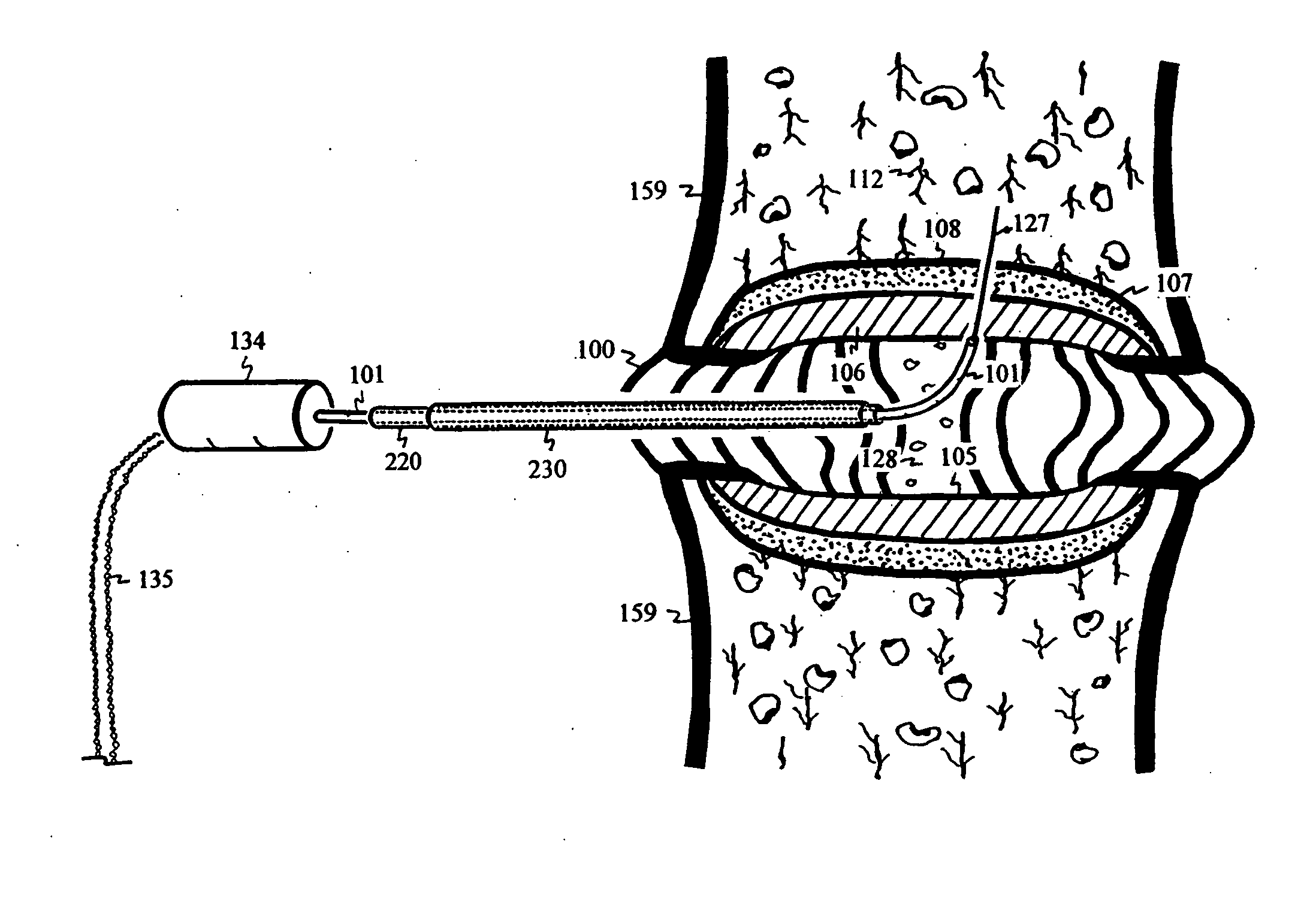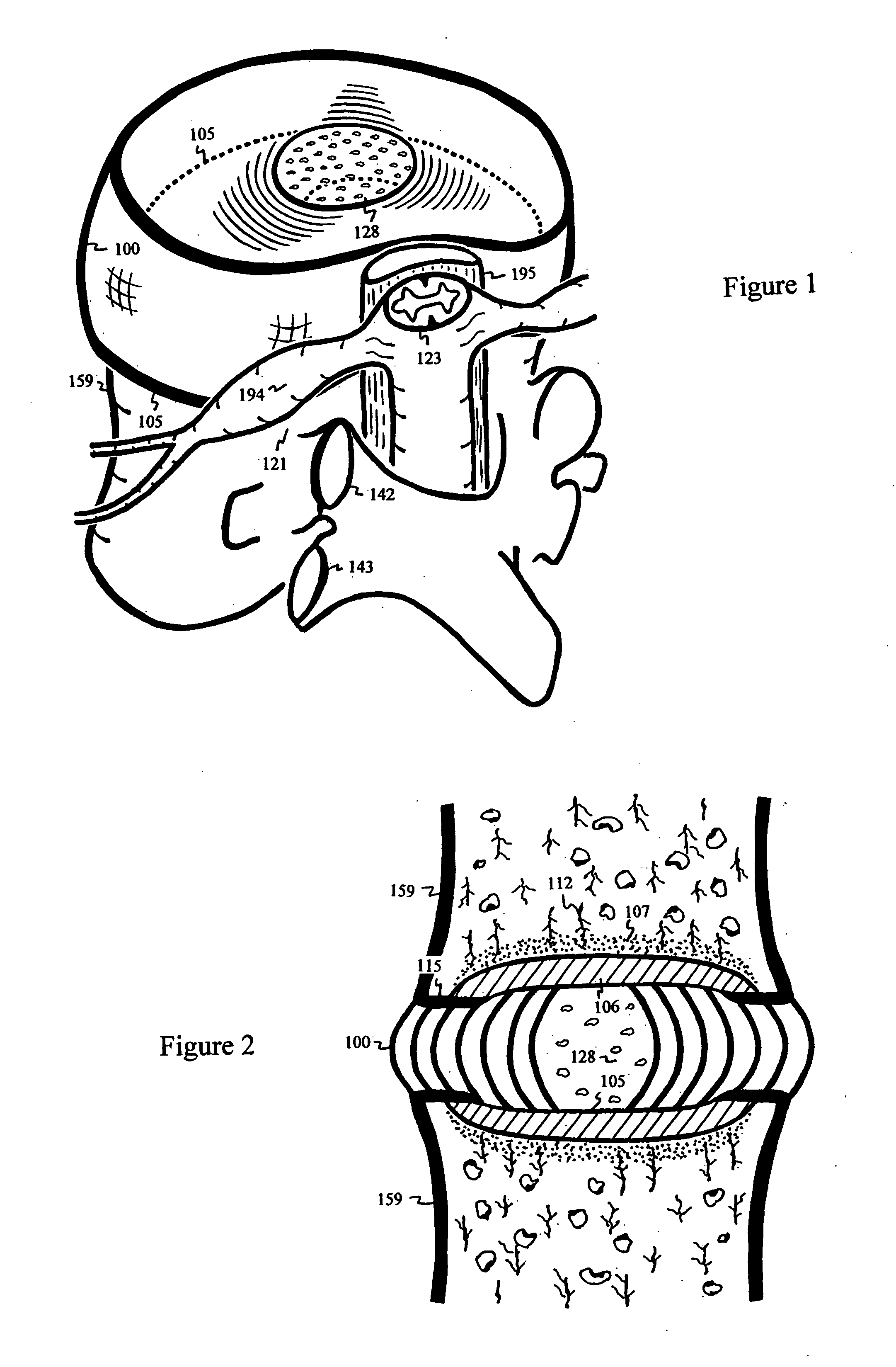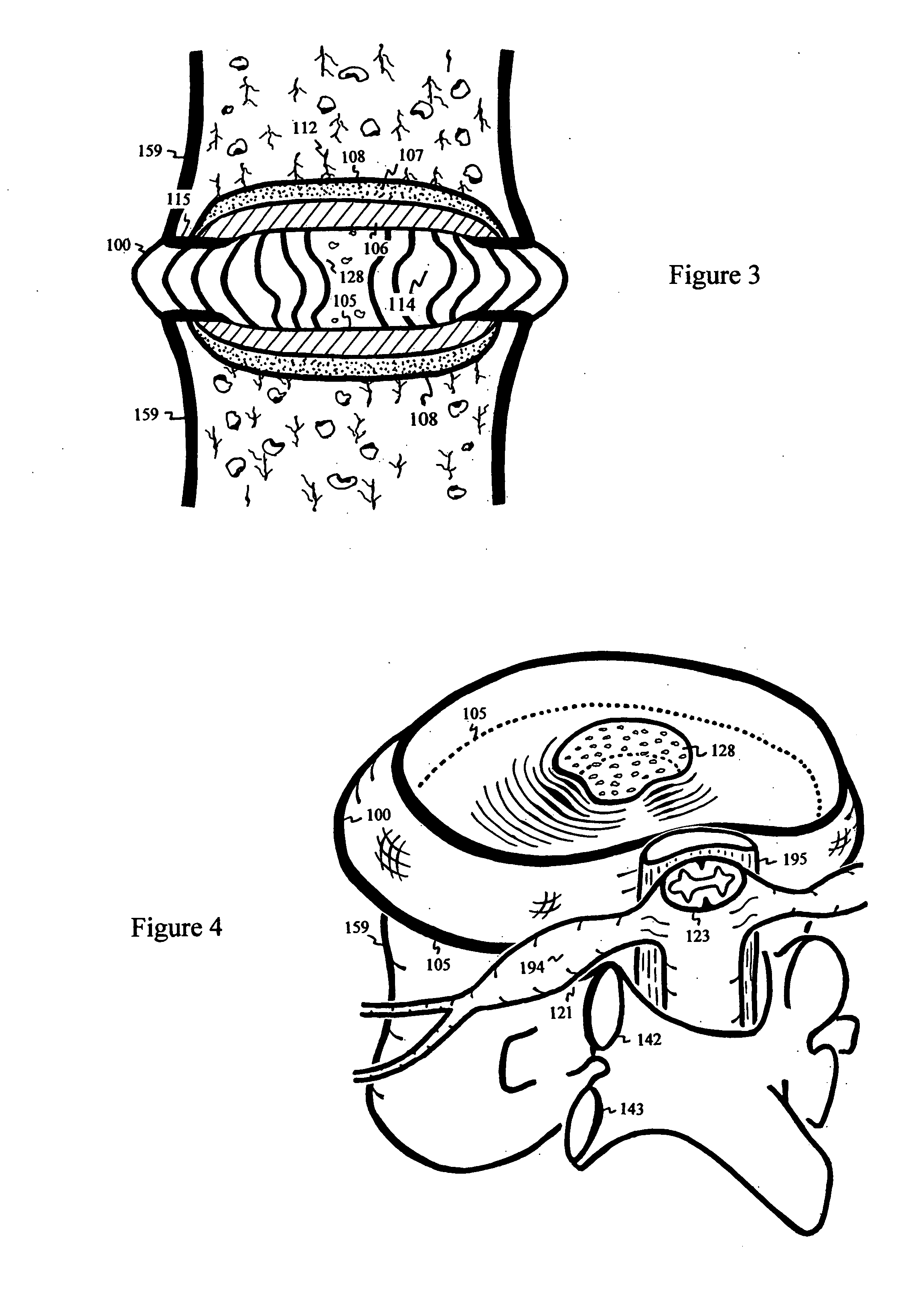Treating back pain by re-establishing the exchange of nutrient and waste
a technology of nutrient exchange and back pain, applied in the field of treating back pain by re-establishing the exchange of nutrient and waste, can solve the problems of no intervention other than discectomy can stop the production of lactic acid, low back, and productivity loss, so as to prevent or minimize the migration of conduit 126, prevent or minimize the effect of migration with time, and promote tissue ingrowth
- Summary
- Abstract
- Description
- Claims
- Application Information
AI Technical Summary
Benefits of technology
Problems solved by technology
Method used
Image
Examples
Embodiment Construction
[0175] Intervertebral discs 100 are avascular and slow healing. In fact, disc 100 degeneration is progressive. FIG. 5 shows punctures 224 through the calcified endplate 105 to enhance permeation of nutrients and oxygen to nourish and / or regenerate the inner disc 100. The entry of the trocar 103 is slanted or angled upward, capable of fitting between superior and inferior surfaces of laminae, thus preventing or minimizing the size of laminotomy.
[0176] Spondylolisthesis is a condition in which a vertebral body 159 detaches and slips from a disc 100, usually the L5-S1 disc 100, as shown in FIG. 6. The slippage usually occurs when some erosion on the facet joint 129 allows the inferior articular process 143 of L5 to slip over the superior articular process 142 of S1. Spondylolisthesis is normally surgically treated with lumbosacral fusion using instrumentation fastened by screws vulnerable to fatigue and breakage. To enhance reattachment between the endplate 105 and the disc 100, endpla...
PUM
 Login to View More
Login to View More Abstract
Description
Claims
Application Information
 Login to View More
Login to View More - R&D
- Intellectual Property
- Life Sciences
- Materials
- Tech Scout
- Unparalleled Data Quality
- Higher Quality Content
- 60% Fewer Hallucinations
Browse by: Latest US Patents, China's latest patents, Technical Efficacy Thesaurus, Application Domain, Technology Topic, Popular Technical Reports.
© 2025 PatSnap. All rights reserved.Legal|Privacy policy|Modern Slavery Act Transparency Statement|Sitemap|About US| Contact US: help@patsnap.com



